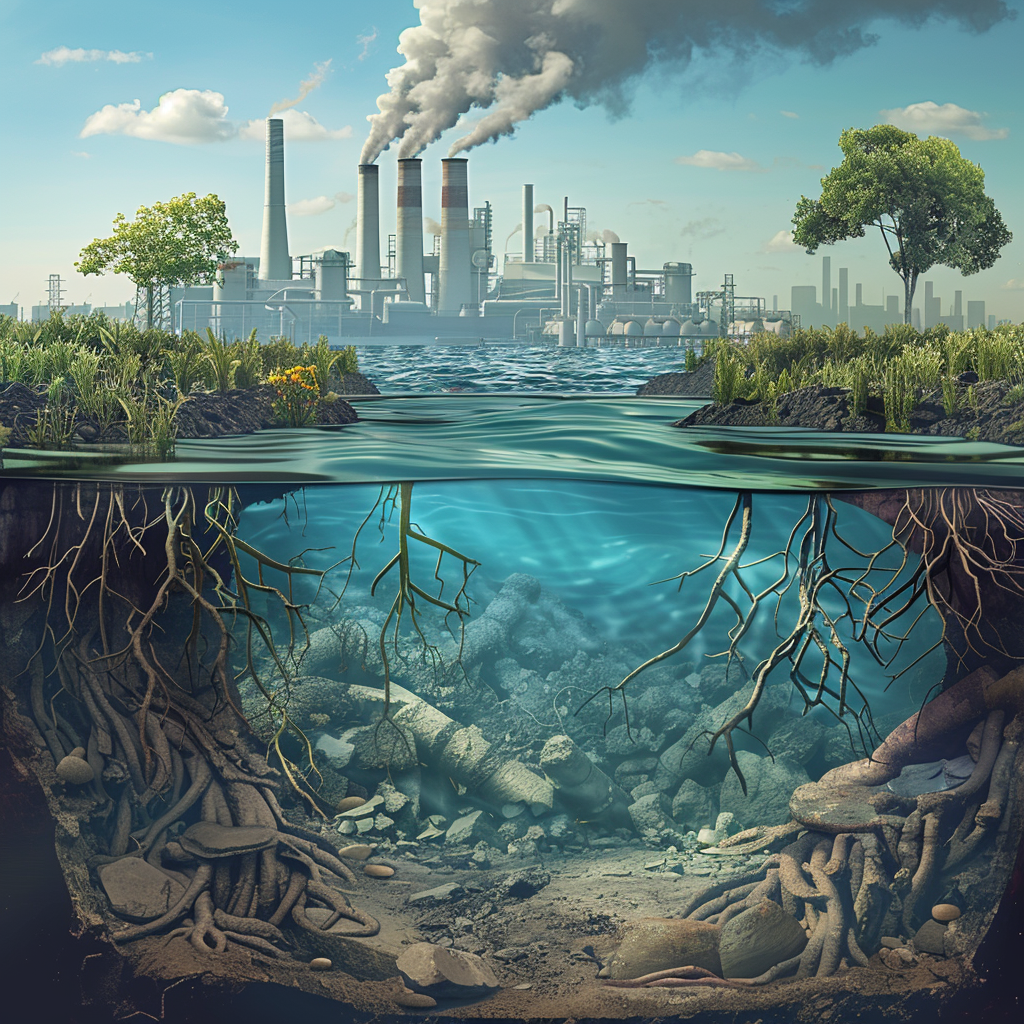Introduction
How PFAS Enters the Environment
PFAS enter the environment through several pathways:
- Industrial Discharge: Manufacturing facilities release PFAS into the air, soil, and water.
- Consumer Products: Everyday items such as non-stick cookware, waterproof clothing, and food packaging contribute to environmental contamination when disposed of improperly.
- Firefighting Foams: Used extensively in firefighting and training exercises, these foams are a major source of PFAS pollution, especially near military bases and airports.
- Wastewater Treatment Plants: These facilities often cannot fully remove PFAS, leading to their discharge into rivers and lakes.

Impact on Water Bodies
One of the most significant environmental impacts of PFAS is their contamination of water bodies:
- Groundwater Contamination: PFAS can leach into groundwater from industrial sites, landfills, and agricultural fields where contaminated sludge is used as fertilizer.
- Surface Water Pollution: Rivers, lakes, and oceans can become contaminated through direct discharges, runoff, and atmospheric deposition. PFAS are not easily broken down by natural processes, leading to long-term persistence in these environments.

Effects on Wildlife:
PFAS contamination has profound effects on wildlife:
- Bioaccumulation: PFAS accumulate in the bodies of aquatic and terrestrial animals, leading to higher concentrations up the food chain. Predatory species, including birds of prey and marine mammals, are particularly at risk.
- Health Impacts: Studies have shown that PFAS can cause a range of adverse health effects in animals, including liver damage, reproductive issues, and developmental problems. These effects can threaten entire populations, particularly for species that are already vulnerable.
Long-Term Environmental Consequences
The persistence of PFAS in the environment means that their impacts are long-lasting and widespread:
- Ecological Imbalance: The accumulation of PFAS in different components of the ecosystem can disrupt ecological balance, affecting species diversity and ecosystem services.
- Human Exposure: Environmental contamination by PFAS can lead to indirect human exposure through the consumption of contaminated water and food, leading to further public health concerns.
Mitigation and Remediation Efforts
Addressing the environmental impact of PFAS requires efforts at multiple levels:
- Regulation and Policy: Governments need to implement regulations to limit PFAS emissions and phase out non-essential uses.
- Clean-Up Initiatives: Advanced technologies and remediation strategies are needed to clean up contaminated sites, particularly groundwater and surface water bodies.
- Research and Innovation: Ongoing research is essential to understand the full extent of PFAS contamination and develop innovative future-proof replacements.
Read more about rules and regulations here.
Conclusion
The environmental impact of PFAS is a complex and far-reaching issue that demands immediate attention. While these chemicals have provided significant benefits in various applications, their persistence and toxicity pose severe risks to humanity and wildlife. By understanding these impacts and taking proactive measures, we can work towards a healthier and more sustainable environment for future generations. Stay informed and support initiatives aimed at reducing PFAS pollution to protect our planet.
Stay up to date and join our Newsletter:
